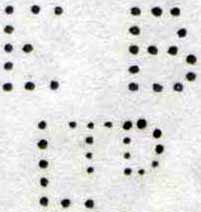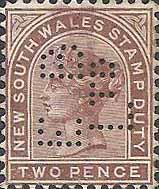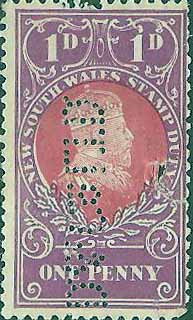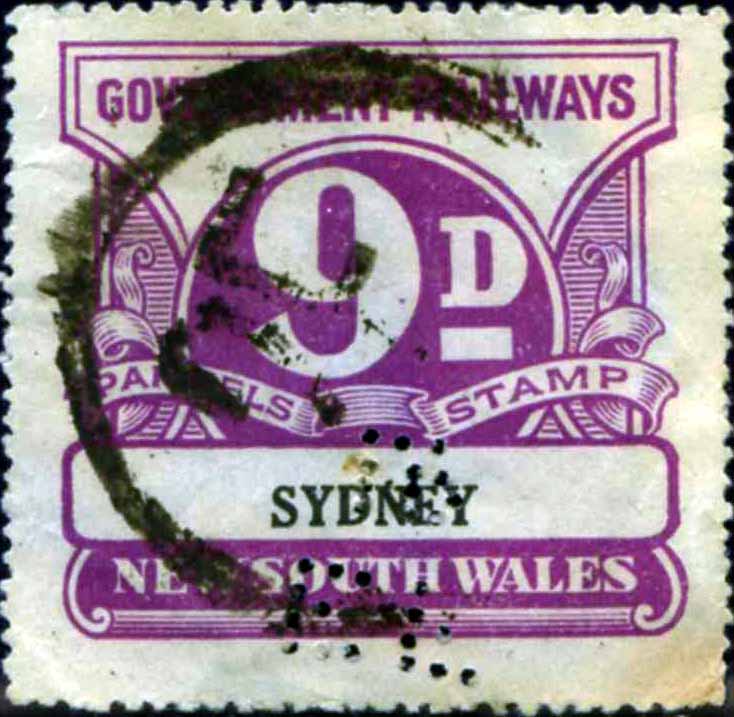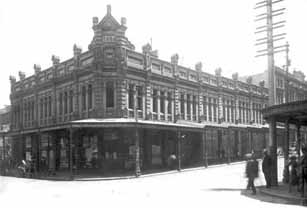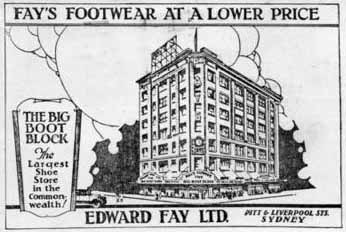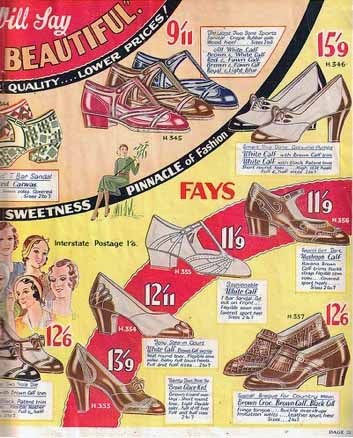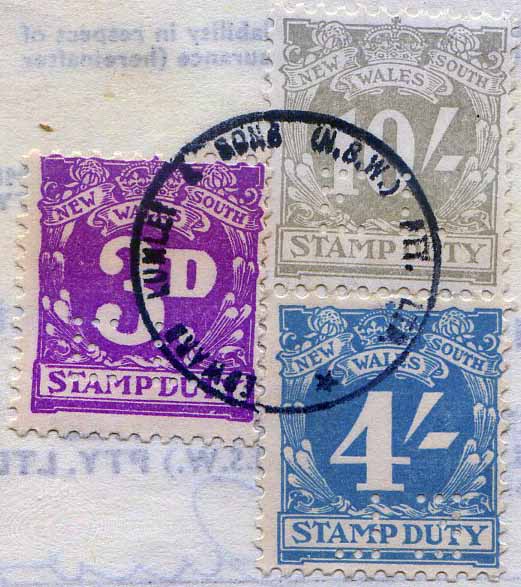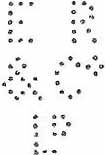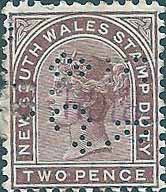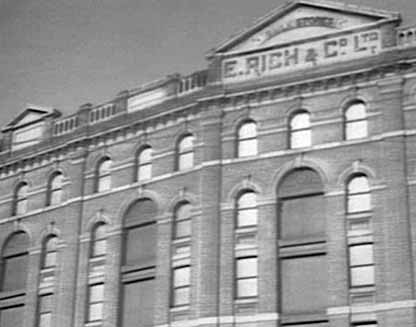|
Private Revenue Perfins of New South Wales An Elsmore Coath production The authors would welcome your comments additions or input into this work A B C D E F G H I J K L M N O P Q R S T U V W Y Other E -------------------------------------------------------- EB/LTD.a
User: Elliott Brothers. Ltd Wholesale Chemists Address: George St, Sydney, NSW Then Pitt St, Sydney, NSW Then O'Connell St, Sydney, NSW. (O'Connell St, Sydney was said to be home of the drug trade) Revenue Use: QV 1880-1902 issue 2d Rarity Scale: QV 1880-1902 issue 2d R4 Railway Use: 1891 issue 3/- Rarity Scale: 1891 issue 3/- R4 Background: *George Elliot migrated to Australia in the late 1840’s with his two brothers Frederick and James. In 1859 they took over Edward Youngman’s wholesale druggists and dry salting business. They expanded into the production of a range of drugs and chemicals as well as the importation and sale of surgical instruments. In 1873 their venture became the private company Elliot Bothers Limited and this became a public company in 1885.
In 1884 George’s son James was recalled from studies in Chemistry and Chemical Engineering in London and Germany to join Elliot Brothers. He designed their laboratories in Rozelle and after the death of his elder brother George in 1912 he became Chairman and Managing Director of the company. James died in 1928 having been predeceased by his two sons and as a result the company was absorbed into a new company called the Drug Houses of Australia Ltd.
Drug Houses of Australia Ltd. (DHA) also saw the amalgamation of several proprietary medicine companies, including Felton Grimwade & Co. and Duerdin & Sainsbury Ltd. Later, in 1974, after significant financial losses the company was broken up. Several parts of the company became Felton Grimwade & Bickford Pty Ltd.
Device: The EBLTD.a device was most likely a single die type as multiples show no consistent relationship between pattern strikes. The device is known to have been made by Slopers in London in 1893. A similar device is found used at Elliott Brothers office in Brisbane and the patterns made by these devices are also similar but the Sydney pattern has a smaller TD in LTD with less pins.
The Sydney EB/LTD.a device is found used on the revenue stamps of NSW as well as the postage stamps of NSW and those of Australia. The usage is known from 1894 until at least 1919.
Related patterns: Refer to other Elliott Brothers Ltd patterns in:
QLD: EB/LTD.a
*National Library of Australia -------------------------------------------------------- E.D.&Co...LTD..a
User: Edwards Dunlop & Co Ltd Wholesale Stationer and Paper Merchant Address: 123 Clarence St, Sydney, NSW Revenue Use: QV 1880-1902 issue 2d KEDVII Wmk Crown/A issue 1d, 2d Numeral 1917 issue 2d Rarity Scale: QV 1872-1908 issue QV 1880-1902 issue 2d R4 KEDVII Wmk Crown/A issue 1d R4, 2d R4 Numeral 1917 issue 2d R4 Background: *William Philip Dunlop (Snr) came to Sydney from Scotland in 1861 and worked as a salesman in the paper firm of Alexander Cowan & Co. Ltd. William returned to Edinburgh in about 1867 and founded a partnership with George Murray. He then returned to Sydney and traded as a paper merchant, as Murray, Dunlop & Co. In about 1873 he joined with Law Stationer and Bookseller, Frederick Edwards to form Edwards, Dunlop & Co. William encouraged his brother John Dunlop to come to NSW to join the company and in 1879 he emigrated to Australia with his family, including his wife Margaret and his two sons, James Matthew Dunlop born on 15 April 1867 and his younger brother, William Philip Dunlop born 23 October 1877, both in Edinburgh, Scotland. When they completed their schooling both James and William (Jnr) also joined the company. In May 1886 the company became a public company as Edwards, Dunlop & Co. Ltd. of Sydney and London. In the 1880’s they also opened a branch in Brisbane. Edwards managed the London buying office while William (Snr) and John managed the Sydney sales and distribution. John died in 1912 and James became Chairman and Managing Director of the Australian operations with William (Jnr) as Vice-Chairman. The company prospered despite a disastrous fire in 1906 and supply shortages caused by World War I. They later opened branches in Melbourne in 1920 and Perth in 1937-38. James died in 1949 and William (Jnr) became Chairman and Managing Director. William (Jnr) had taken a lead role in the growth of the company. In about 1944 the company acquired the manufacturing stationer, Galwey & Co. Pty Ltd, and this lead to further expansion of the company in Australia, New Zealand and Papua New Guinea. William (Jnr) died in 1954. Edwards Dunlop came to be the dominant supplier of papers of all forms in Australia and is still trading. Device: The ED&COLTD.a device was a single die device as multiple strikes do not show any consistent relationship to each other. The structure of the device is rather odd, as the layout of the letters into a single row means that the pattern is so long that it does not fit onto many revenue and postage stamps. Even when applied in position 2 (and similar) on the Edward VII bi colour revenue stamps of NSW it requires some care to get the entire pattern onto a single stamp. Therefore the pattern is almost always seen as a partial. There is a similar device with the same layout that was used in the company’s Melbourne office between 1926 and 1940 but this is not reported as being used on revenue stamps. The Sydney office initially used the ED device from around 1905 - 1906 but this was replaced by a series of ED/&CO devices but none of these are reported used on revenue or railway stamps in NSW. The ED&COLTD.a is found used on the revenue stamps of NSW as well as the postage stamps of NSW and later Australia, over the period from 1905 until at least 1931. Related Patterns: Refer to other Edwards, Dunlop patterns in:
QLD: ED.a
* Australian Dictionary of Biography -------------------------------------------------------- EF/LD.a
User: Edward Fay Ltd Importers and Retailers of Footwear Address: Pitt & Liverpool St,Sydney,NSW Railway Use: Numeral 1929 3d 1948 9d Rarity Scale: Numeral 1929 3d R4 1948 9d R4 Background: Edward Fay was born at Balmain, Sydney in 1847 and was initially employed at John Hunter and Co. In the 1880’s he decided to start his own company and he established a small shop at the corner of Pitt & Liverpool St's, Sydney. Later in 1888 he opened a larger two-story sandstone office building on the site. (see image below).
In 1911 Fay formed the company into limited liability Company as Edward Fay Pty. Ltd. with himself as Managing Director.
Fay’s Corner, Pitt and Liverpool St's, Sydney NSW c1913
Fay died in 1914 at the age of 67 and was survived by his wife, four daughters, and one son.
The company continued to expand and opened stores at George St, Haymarket, Broadway, Glebe and Newtown. The company had a busy mail order business, which was supported by regular colour advertising features.
By the 1930’s the company boasted that it was the largest shoe store in the British Commonwealth and in 1932 the Company was acquired by Real Investments. Much later, in 1981, Edward Fay Pty Ltd. was purchased by the Coles Myer Group.
Fay’s Corner, Pitt and Liverpool St's, Sydney NSW c1930
Device: The EF/LD.a device was a single die device as multiple strike do not show any consistent relationship to each other. Further the pattern can be found singularly and centrally on large format stamps such as the NSW railway stamps and a multi die device would tend to leave multiple patterns on such large stamps.
The pattern is found on the railway stamps of NSW (very rarely) but is common on the postage stamps of Australia from the period 1924 until at least 1953.
Evidence for usage dates is hard to derive from postmarks as the nature of Fay’s business was mail order and almost all postage stamps carry parcel cancellations.
Related Patterns: Nil -------------------------------------------------------- EL.a
User: Edward Lumley & Sons (NSW) Pty Ltd Insurance Brokers (Agents for Lloyds of London) Address: 263 George St, Sydney,NSW 11 Castlereagh St, Sydney, NSW Revenue Use: Numeral 1929-66 issue 3d, 6d, 9d, 1/-, 1/6, 2/-, 2/6, 3/-, 4/-, 5/-, 6/-, 10/-, 16/-, £1, 30/-, £5, £10, £30, £50 Decimal 1966 4c, 5c, 8c, 10c, 15c, 20c, 30c, 50c, 70c, 80c, $1, $2, $3, $10 Rarity Scale: Numeral 1929-66 issue 3d R2, 6d R2, 9d R3, 1/- R4, 1/6 R3, 2/- R3, 2/6 R3, 3/- R2, 4/- R3, 5/- R3, 6/- R3, 10/- R2, 16/- R4, £1 R2, 30/- R3, £5 R4, £10 R4, £30 R4, £50 R4 Decimal 1966 4c R4, 5c R4, 8c R4, 10c R4, 15c R4, 20c R4, 30c R4, 50c R4, 70c R3, 80c R4, $1 R3, $2 R3, $3 R4, $10 R4 Background: Edward Lumley was born in St Kilda, Melbourne in June 1892, the son of English parents Benjamin (Bennie) Cohen and Edith Lumley. The family returned to England at around 1902 as Edward is known to have been at school Malvern Grammar School (Melbourne) until that time and then is recorded to have been at Merchant Taylors School, in London between 1903 and 1907 and then University in Switzerland. Bennie started an Insurance brokerage which became Bennie S. Cohen and Son Ltd., London, an underwriting member of international insurance company, Lloyd's of London. Bennie was very successful in growing his brokerage business and built a web of companies incorporated in each of the States of Australia, as well as New Zealand and later had offices in New York, Paris and major cities in South Africa, Canada and South East Asia. Bennie died in 1926 and Edward became Chairman and Managing Director of Bennie S. Cohen and Son Ltd, London. Oddly Edward is named in his fathers probate as Edward Lumley, and it seems that he took his mothers maiden name around the time that he was married to Kathleen Wills (28 June 1922). Edward did not rename the company to his own name until at least the late 1940’s but Edward Lumley & Sons (NSW) (through the connection with Bennie S. Cohen and Son Ltd) laid claim to be both the oldest and largest Insurance brokerage house in Australia. The parent company having created a presence in Australia in around 1910. Edward Lumley & Sons (NSW) offered a broad range of insurance underwriting including Marine, Accident, Fire, Workers Compensation and all forms of Industrial and commercial insurance. The company had its head office at 263 George St, Sydney as well as branches in Lismore, Newcastle and later Canberra (1952). Edward Lumley died in London on 24 May 1960 but the company continued to be run in his name from London. As noted above the company was a collective of separate incorporated entities and this may lead to misreports of ‘head office’ locations. This is further confused by the later creation of the entities: Edward Lumley (Aust) Pty Ltd, 11 Castlereagh St, Sydney, NSW. Edward Lumley Brokers Ltd, 84 Pitt St, Sydney, NSW. In the late 1990’s the company was rebadged as Lumley Insurance and was later acquired by Wesfarmers Insurance. Device: The EL.a device was a multi die device as the various strikes show a consistent relationship to each other. It is most likely a 3 die device in a horizontal array as this was the type of device that was used by many contemporary companies, in particular those in the Insurance industry. The dies are essentially identical so the authors have listed it as a single pattern despite the multi die layout. The device was in service from at least 1957 until 1970. The 1970 usage is rather late as most insurance companies in Sydney stopped using perfins in 1966-67. Related Patterns: Nil
-------------------------------------------------------- E R/&Co/LD.a
User: E. Rich & Co Ltd Importer, Warehouser, Stock and Station Agents Address: 24-28 O'Connell St, Sydney, NSW Also, Bond Store Circular Quay, Sydney, NSW Revenue Use: QV 1880-1902 issue 2d QV 1897 fiscal issue 2d, 6d Rarity Scale: QV 1872-1908 issue 2d R4 QV 1897 fiscal issue 2d R4, 6d R4 Background: *Edward Rich was born in Prussia in 1844. After receiving business training in Berlin he came to NSW in 1864. He started trading by taking teams of drays of general merchandise to the diggings in North Queensland via the overland route. In 1871 he went into a partnership in a General Store at Brewarrina (near Bourke) which he ran successfully for a number of years until his health suffered and he ceased active involvement in the partnership. Following a period of rest he entered into another partnership with Mr A C Garrick of Garrick and Co (Wine and spirit merchants) of O Connell St. They built a large business that traded as Garrick and Co until at least 1887. When the railway was extended to Bourke, Rich transferred his Store from Brewarrina to Bourke to give the company access to the booming Darling and Murray river trade. From about 1887 the company became E (Edward) Rich & Co, general merchants and they had premises at 95 Pitt St, but later 24-28 O'Connell Street. The company expanded into a stock and station agency as well as a forwarding agency for produce. To manage this they opened a bond and bulk store at Circular Quay. They began to publish 'Our Quarterly Magazine' around 1900, which was essentially a catalogue of goods, product listings and advertisements but it also included popular literature. The company was incorporated in London on 18 November 1898 and became E Rich & Co Ltd. Rich was married and had two sons and two daughters. His eldest son Edward (junior) H Rich (born 1888) was employed at the companies Brisbane Merchandise store. Edward Rich (senior) died on 16 September 1912 while in Europe seeking treatment for an internal aliment. Edward (junior) later took over management of the Sydney office. The company was still trading as E Rich & Co Ltd in 1948 when Edward (junior) died at the age of 60.
E Rich and Co Ltd Warehouse in Circular Quay, Sydney, NSW c1900 Device: The ER/&CO/LD.a device is a single die device as multiple strikes do not show any consistent relationship to each other. The pattern is found on the revenue stamps of NSW as well as the postage stamps of NSW and later those of Australia. The usage period was from at least 1899 until 1916. The device is different in structure to the RICH.a device used in Queensland. The RICH.a device from Queensland with its angled die is similar to other Brisbane devices such as FINNEYS.a and some of the BP’s of Burns Philip. The ER/&CO/LD.a device that the company used in Sydney was most likely sourced from England as it is consistent with the style and layout of these many of these devices. Related Patterns: Related patterns: Refer to other E Rich & Co Ltd patterns in: QLD: RICH.a *Trove *State Library of NSW -------------------------------------------------------- A B C D E F G H I J K L M N O P Q R S T U V W Y Other © copyright 2011 |
